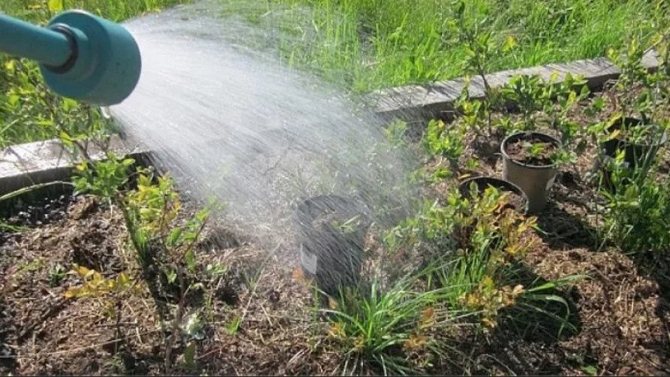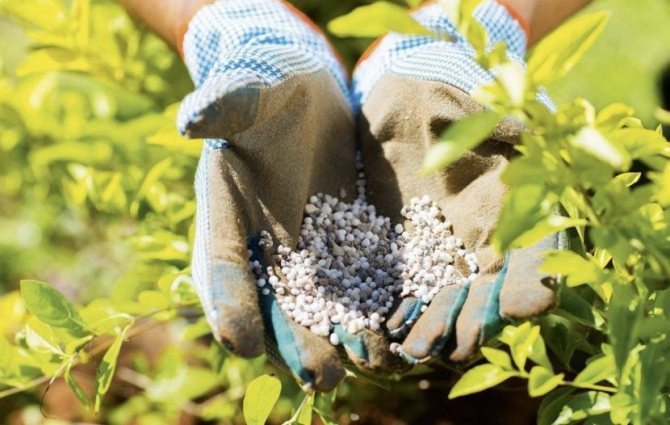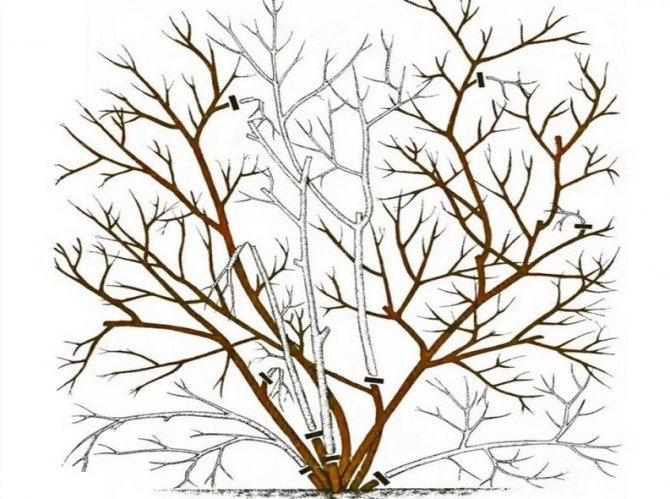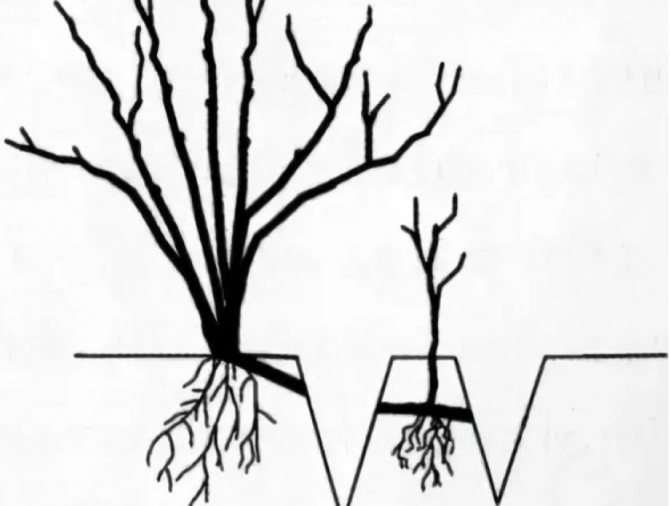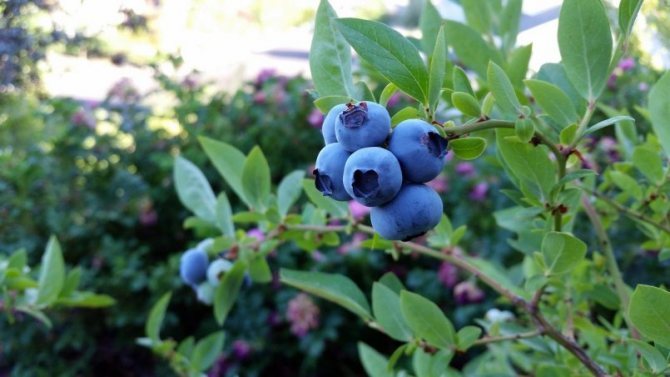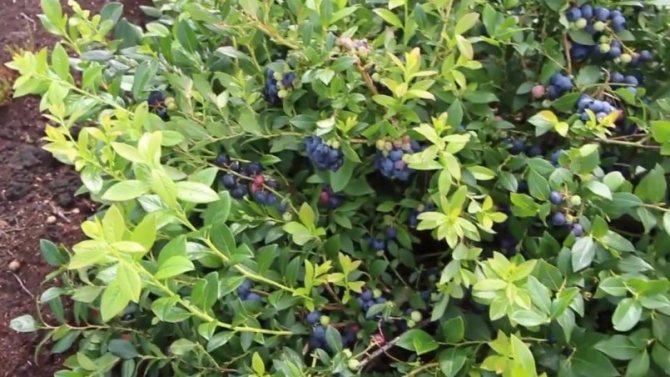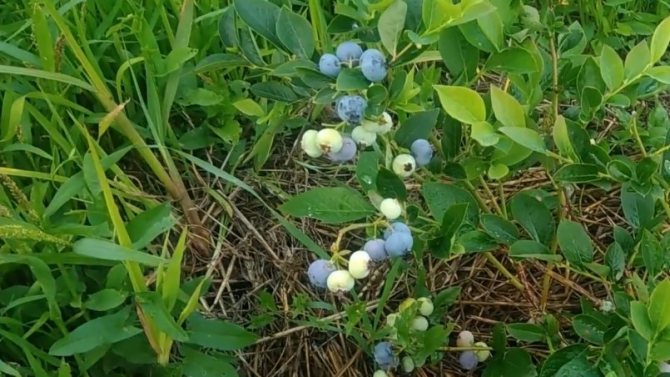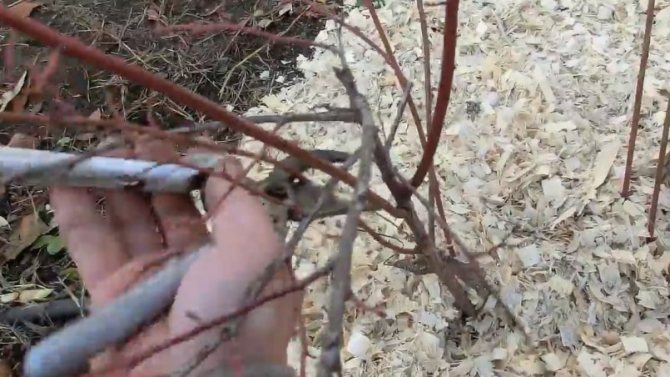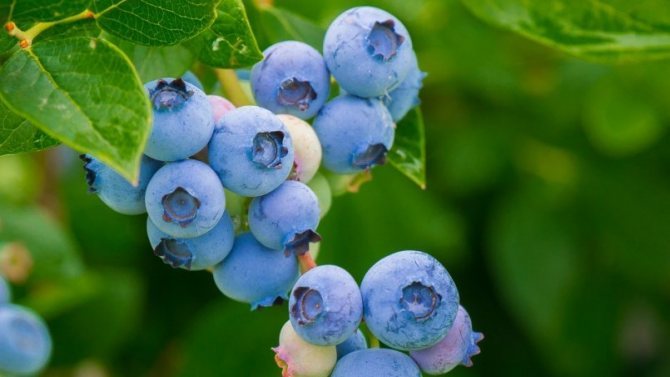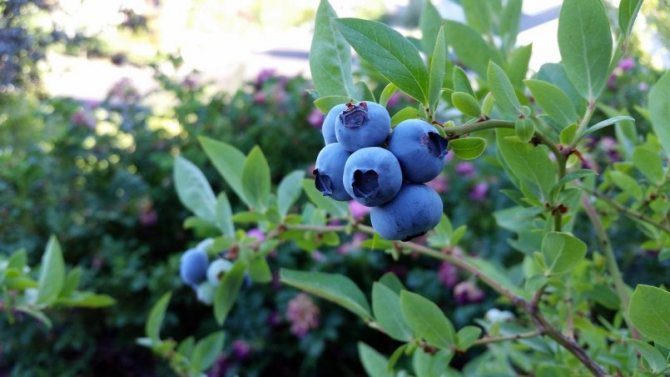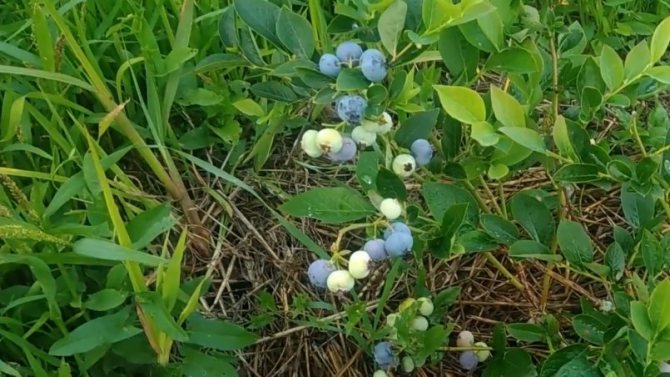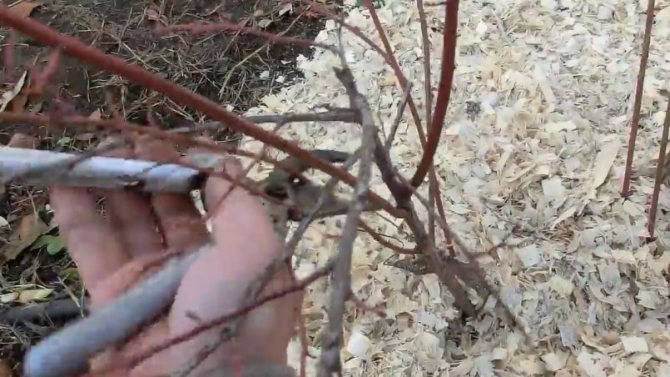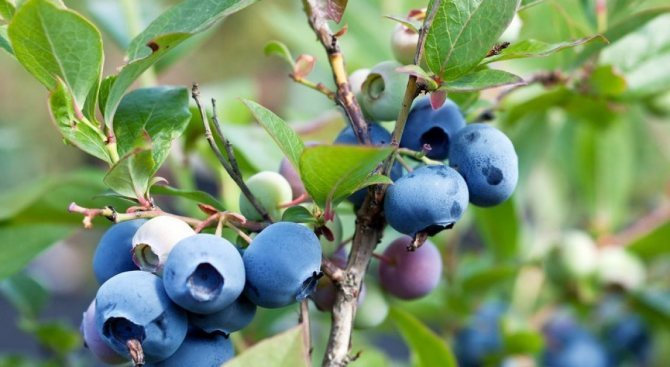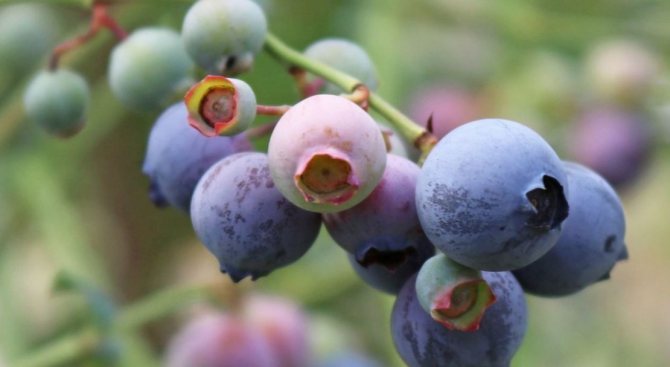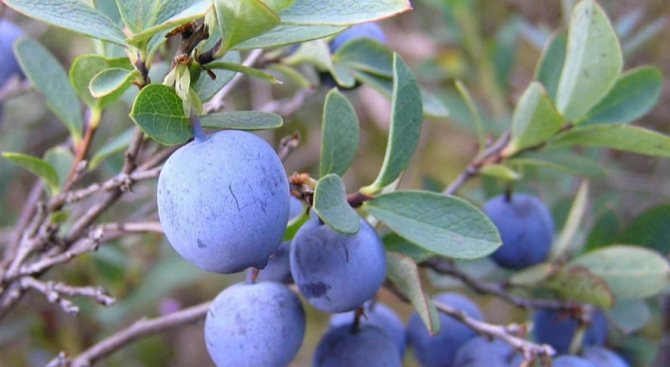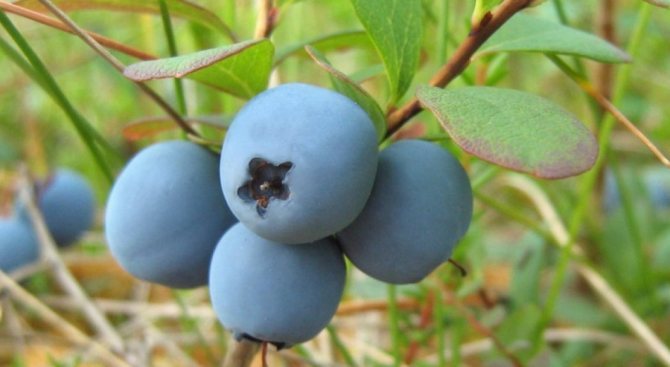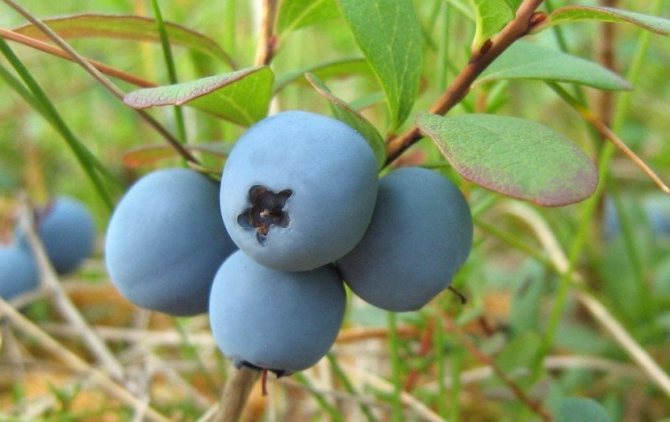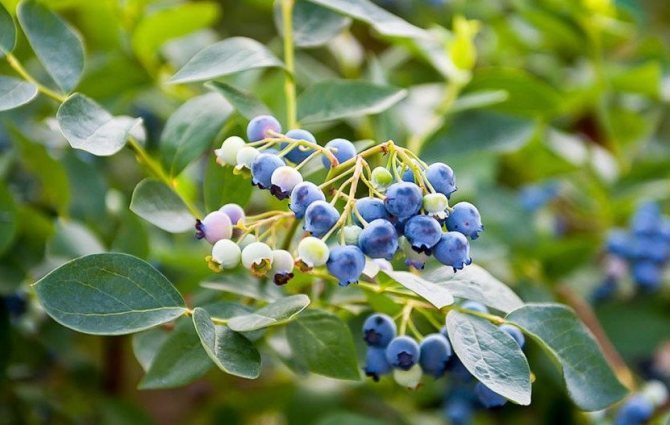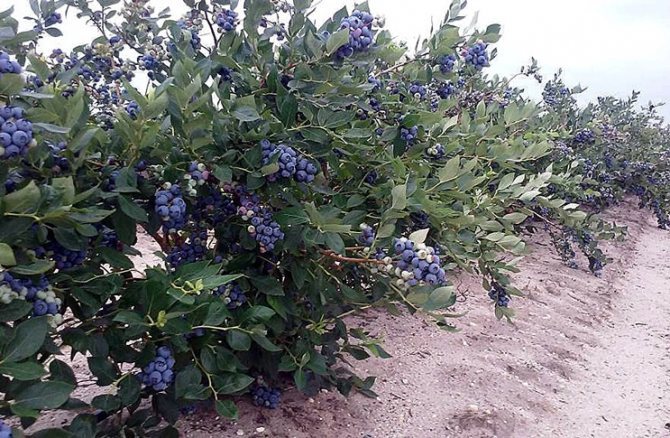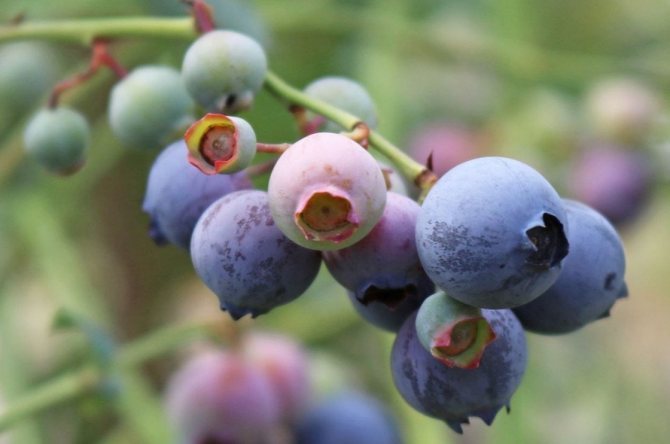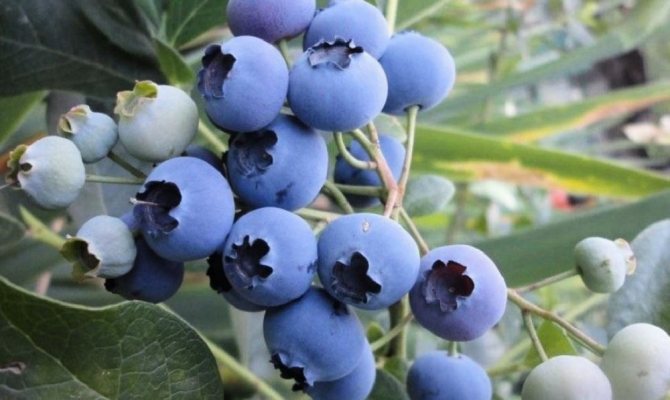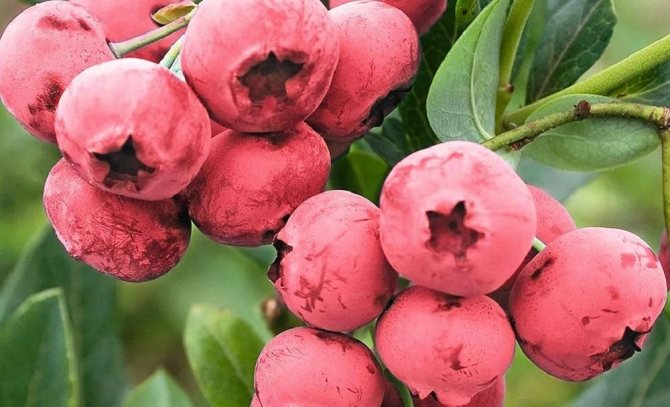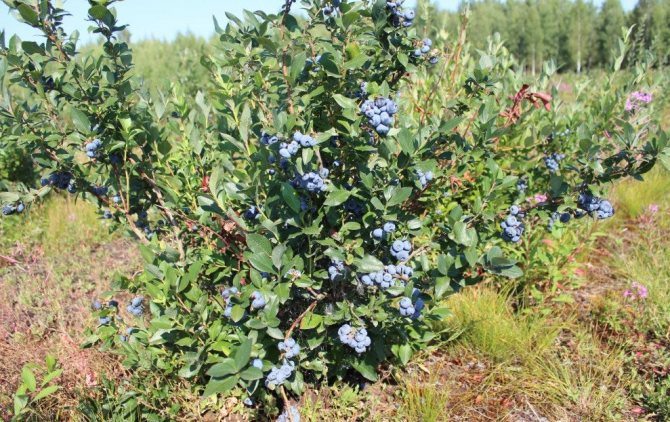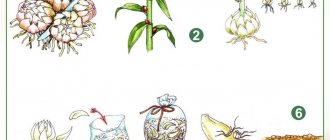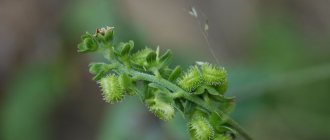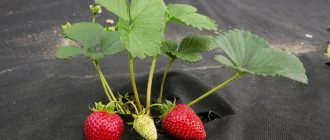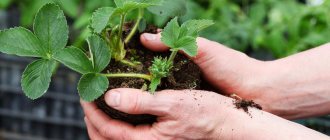Blueberries belong to the capricious horticultural crops, as they require not only careful care, but also certain growing conditions. First of all, this applies to the soil: it must be acidic, since the shrub does not take root well on black soil or sand. But, despite certain difficulties, having grown blueberries on your site, you will be fully rewarded for your work with a rich harvest of tasty and healthy berries.
Since proper planting is key to the successful cultivation of blueberries, we will pay attention to this stage of the cultivation of the shrub. From this article, you will learn not only the technology of planting a plant in open ground, but also get acquainted with tips for choosing a seedling and choosing a suitable place for planting a crop.
- Making planting holes for blueberries
- In the spring
Content
- Listen to the article
- Description
- Planting blueberries When to plant
- Soil for blueberries
- Planting blueberries in spring
- Planting in autumn
- Blueberry care Growing garden blueberries
- Pests
Where grows
In cultivated form, blueberries can be found in almost every part of the world. It grows into:
- Russia - especially in Novosibirsk, in the upper belt of the Urals, Moscow region, Leningrad, Volgograd, Arkhangelsk regions, in the Far East, Siberia, Tundra;
- in North America, along the strip from Alaska to California;
- on the islands: British, Japanese, Iberian Peninsula, Iceland.
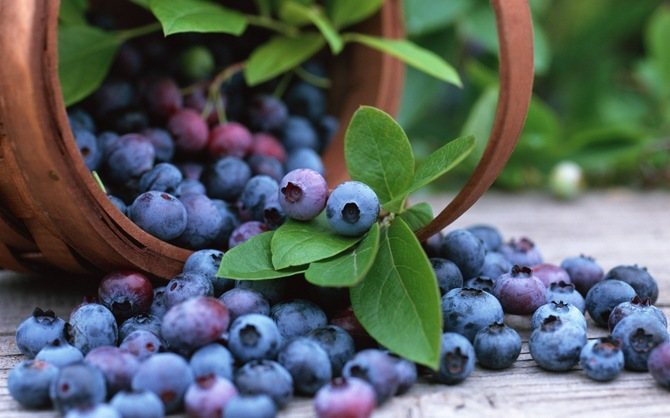
Garden blueberry appearance
Those who are interested in where blueberries grow should be aware that different varieties of it can be found in every region of Russia, as well as in almost every region of Ukraine and Belarus.
Planting and caring for blueberries
- Landing: it is possible in the spring, before the buds swell, but better in the fall, during the fall of the leaves.
- Lighting: bright sunlight.
- The soil: rested and recovered for several years under steam, well-drained, peaty-sandy or peaty-loamy, with a pH of 3.5-4.5 pH.
- Watering: in the mornings and evenings, twice a week, with a consumption of at least a bucket of water for each adult bush. That is, under each bush, you should pour a bucket of water twice a week in the morning and in the evening. On the hottest days, blueberries are not only watered, but also sprayed early in the morning or after 17.00.
- Cropping: in the spring, until the buds swell.
- Top dressing: only with mineral fertilizers at the very beginning of the growing season.
- Reproduction: seeds, cuttings and dividing the bush.
- Pests: May beetles, beetles, silkworm caterpillars, scale insects, aphids, leafworms.
- Diseases: gray rot, moniliosis of fruits, physalsporosis, septoria, phomopsis, double spot, stem cancer, dwarfism, red annular and necrotic spots, filamentous branches, viral mosaic.
Read more about blueberry cultivation below.
Outdoor planting rules
In the Krasnodar Territory, blueberries can be planted both in spring and autumn. However, the autumn time is preferable, because.in the spring you can be late - because of the rather high temperatures, the seedlings begin to bloom very early.
Important! Experienced gardeners recommend planting several varieties at once. The berries from cross-pollination are usually larger and tastier.
For planting, choose 2 or 3-year-old strong healthy plants with an earthy clod. A fungus lives on the roots of blueberries, forming a symbiotic relationship with them, the so-called. mycorrhiza. It helps nutrients to penetrate the roots. If the seedling does not have an earthen lump, the mycorrhiza dies - the plant will not take root well in a new place and may also die over time.
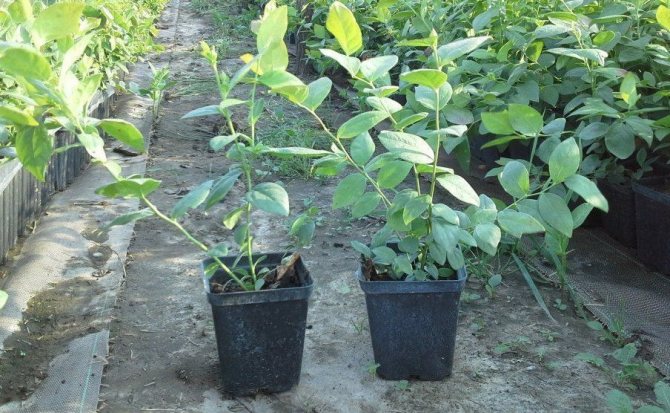

Low-growing varieties are planted in the open field with an interval of 80 cm, tall ones - 120-160 cm. 2 m are left between rows. Before planting, an earthen ball is soaked. The seedling is taken out of the container, the clod is carefully divided into 4 parts with your hands, straightening the roots. The plant is buried 5-6 cm above the ground level in a shipping container.
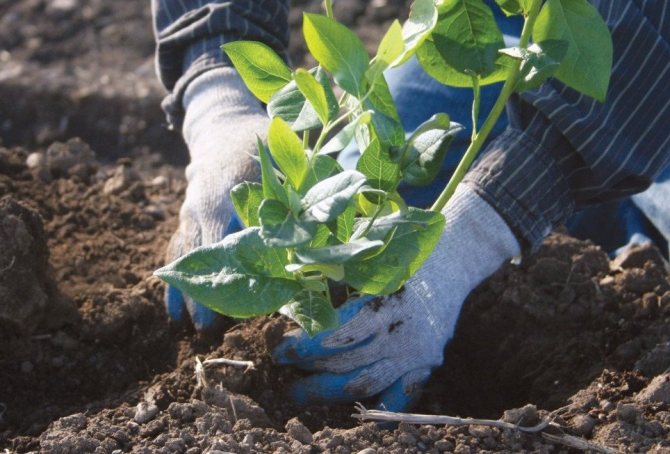

After planting, the hole is mulched with high-moor peat, sawdust or needles, with a layer of 10-15 cm. Such mulch will not only keep the soil moist, but also gradually acidify the soil. Every 2-3 years, mulch material is poured.
Seat selection
Blueberries are light-loving and durable (they can grow in one place for up to 60–80 years). A well-lit place is chosen for planting. If you plan to plant trees next to the bushes later, they are positioned so that the crown does not shade the blueberries, and the roots do not deplete the soil around the bushes. There will be no harvest in the shade, and the bush will slowly form and grow.
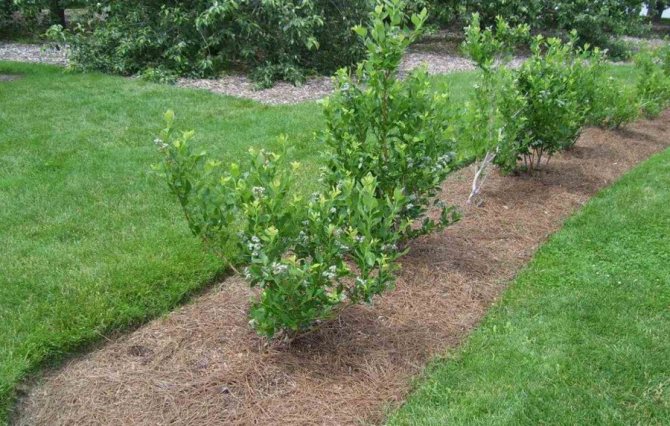

Soil preparation
A prerequisite for stable blueberry yields is acidic (with a pH of 3.5–4.5) soil. If the soil is neutral or alkaline, the plant will be sore (eg, chlorotic) and stunted.


The nutrient soil is prepared on the basis of sour high-moor peat. If it is purchased in a package in a store, then before use it is loosened and left for about 5 hours to evaporate the ammonia. 1/3 of pure river sand is added to 2/3 of the peat. Some gardeners add sawdust from coniferous trees, but it is believed that they delay the growth of the bush.


You cannot add ash, lime, dolomite flour to the soil for blueberries - they alkalize the soil, and this is detrimental to the plant. Therefore, when choosing a place, they take into account which predecessors grew on it and what they were fertilized with. If you made the above dressings, it is better to choose another site.
Planting pit preparation
In the conditions of the Krasnodar Territory, pits are dug with a diameter of 60–100 cm and a depth of 100 cm. The bottom and walls of the hole are lined with a film or other durable nonwoven material, making several drainage holes. This will exclude the contact of the peat nutrient mixture with the surrounding neutral soil. A layer of coniferous tree bark, litter, rotted branches, sawdust are laid on the bottom and the pit is filled with a nutrient mixture. Before planting, a hole is made, where the seedling is placed and added dropwise.
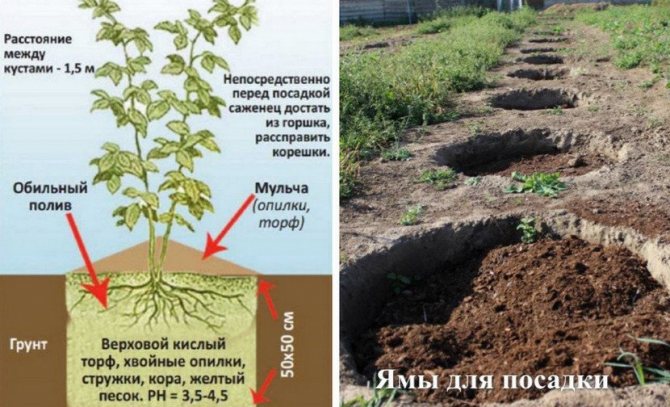

The trench method is more suitable for industrial cultivation of shrubs. At the same time, the consumption of the nutrient mixture increases significantly. A trench is dug 50-60 cm deep and wide. The length is limited by the size of the garden and individual plans. The bushes are placed at intervals of 80–120 cm, 2-3 m are left between the rows. The rest of the process does not differ from planting with a pit method.
Garden blueberry - description
Scientists classify lingonberries, cranberries, blueberries and blueberries to the Vaccinium genus, with which some botanists identify blueberries, although not all specialists think this is fair. The root system of blueberries is fibrous, without root hairs, branches are erect, cylindrical, covered with dark gray or brown bark, shoots are green.The common blueberry bush reaches a height of only one meter, the tall blueberry species grows up to two or more meters in height. Small, tough, whole smooth blueberry leaves up to three centimeters long and up to two and a half wide grow in successive order on short petioles. They have an obovate or lanceolate shape with a blunt apex and slightly curved edges downward, the upper side of the leaf plate is bluish-green due to a waxy coating, the lower side with strongly protruding veins of a lighter shade.
Small drooping five-toothed flowers with a pinkish or white jugular corolla up to 6 cm long and 8-10 stamens sit in several pieces on the tops of last year's branches. The berries of common blueberry are oblong, up to 12 mm long and weighing up to one gram, blue with a bluish bloom, thin-skinned, with greenish flesh. The berries of American tall blueberries weigh from 10 to 25 grams, up to 10 kg are harvested from one bush in America, in our conditions, in warm regions and with favorable weather, you can get up to 7 kg of berries from one bush of tall blueberries.
- Tree care in spring
The fact is that not all foreign varieties are suitable for growing in our climatic conditions, since those that begin to bear fruit late only have time to ripen by 30%. Therefore, those who want to grow this wonderful berry on their site are better off cultivating common blueberries or purchasing early and mid-ripening varieties of garden blueberries.
Collection and storage of fruits
The readiness of the berries for picking is determined by the amount of sugar in them. Immediately after the berries pick up color, the fruits contain only 10% sugars. After a few days, their number increases to 16%, and after 5-6 - the mass of fruits and the amount of sugars will increase to 30%.
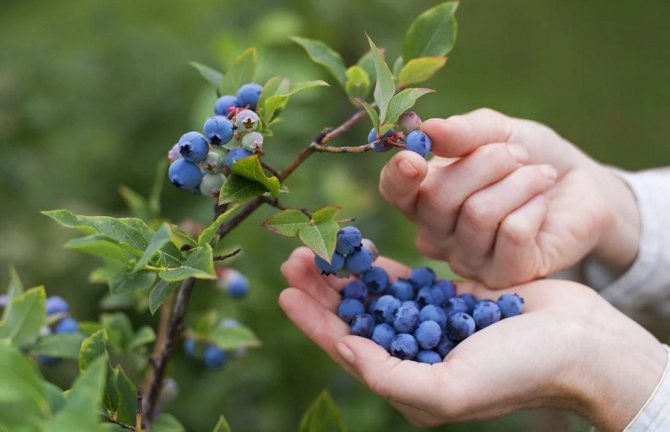

Blueberries are harvested in dry weather. Wet berries (for example, after rain or watering) are poorly stored - after 2-3 days they can become moldy. Therefore, they are not washed before storage. It is recommended to immediately put the berries in containers or birch bark baskets and place them in a cool dark place with a temperature of + 10 ... + 15 ° С.
Did you know? If you add berries to the cake
blueberries, without first rolling them in flour, they will stain the dough blue.
The storage time will depend on the conditions created. At room temperature, blueberries are stored for only 3-4 days. In the refrigerator at + 5 ° C, the berries can retain their taste for up to 4 weeks. However, the fruits of some varieties begin to deteriorate after 2-3 weeks. Frozen fruits are stored at a temperature of -16 ... -18 ° C for up to 12 months.
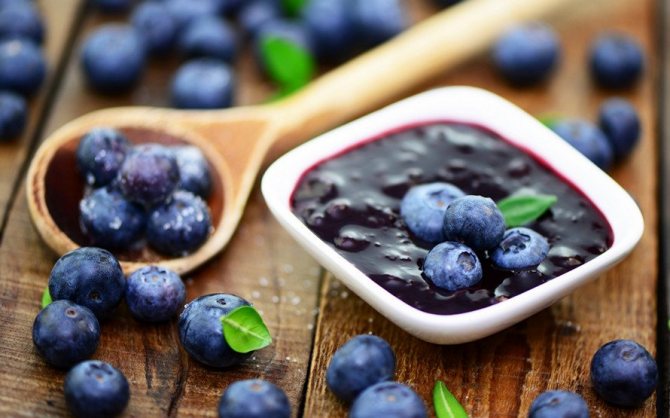

They also dry blueberries, make jam and jams from them, grind them with sugar, etc. The blueberries collected for sale are recommended to be stored in packaging, in a room with a temperature not higher than + 15 ° С. If long-term storage is planned, the temperature is lowered to 0 ° С, and the air humidity is brought to 90–95%.
Contraindications
No matter how many berries you eat, you need to remember that everything is fine in moderation. There are no special contraindications when using the product, but those suffering from high acidity of the stomach and prone to allergies should try the berry carefully. Do not overeat either, as you may experience a headache or vomit.


Having planted garden blueberries on your plot, you will not only saturate your body with the necessary vitamins and take care of your health, but you will also be able to ennoble your plot with a beautiful plant. And since the plant is considered a long-liver (it can live up to 100 years), it will create an atmosphere of comfort in the country for a long time.
Planting garden blueberries
When to plant blueberries
Blueberry planting is carried out both in spring and autumn, but spring planting is more reliable than autumn planting, because during the summer season, blueberry seedlings manage to take root on the site and get stronger so that the risk of their freezing in winter is minimal. In this article, we will introduce you to the plant's agricultural technology and will tell you in detail how to plant blueberries correctly, how to grow blueberries and how to care for blueberries, namely, how to feed blueberries, how to water blueberries and how to propagate blueberries.Growing blueberries is a simple process, it will be more difficult to collect and preserve the harvest, but we will also tell you about this.


We grow blueberries in the Krasnodar Territory!


I live in Kropotkin, Krasnodar Territory. While someone comes up with bad articles, we have been eating this delicious and healthy berry for eight years. The article talks about growing blueberries in the Middle Lane, but acidic soils are also rare in the Middle Lane. Of course, eight years ago, people were very careful about blueberry seedlings, now - no problem.
Of course, at the time when we started to deal with blueberries, there were many problems and questions: the lack of experience and practice in growing blueberries in the Kuban conditions, as well as the lack of sour peat in the sale. But we got out of the situation. They mixed the earth with coniferous sawdust, added river sand, garden sulfur, pine needles (fortunately, after the New Year holidays, this was not a problem).
How to plant blueberries The planting pit should be 0.5 / 0.5 / 0.5 m. But in this case, throughout the growing season, it is necessary to acidify the ground around the seedling: once a month with an electrolyte solution of 50-70 million per 10 liters of water. Now this is no problem. Sour peat pH 3.4-4.5 is sold in any garden center. Having bought peat in a package, you loosen it and in this state it should lie down for 5 hours (so that the ammonia evaporates), then add 1/3 of river sand. After stirring, fill the hole and fill it with water several times. There is no need to fence the pit with roofing material, as written in the article. After the mixture is soaked, plant the blueberry seedlings. Saplings should be only with a clod of earth. After planting, it is necessary to mulch with coniferous sawdust or needles 5-10 cm. Blueberries are very fond of watering. Planting blueberries is only necessary in the sun. Some seedlings can produce berries in the first year. From adult bushes, we collect 3-4 kg per bush. Landing scheme 1.5-2 m.Organic fertilizer for blueberries is poisonous. To preserve acidity in peat, sour peat can be added to the hole once every two years. Tall blueberries are different in terms of ripening. Thanks to this, we eat blueberries from the beginning of June to September without a break. When buying seedlings, remove the clod from the pot to make sure there are roots all over the pot.
Transfer to a new location
As a rule, blueberries are planted immediately to a permanent place. However, sometimes it becomes necessary to transplant an already quite adult, productive berry plant. In this case, it is imperative to carry out a pre-planting deep digging of the soil, as well as check the indicators of soil acidity in the area allotted for transplanting berry crops.
The planting pit for transplanted blueberries should be at least 60 x 50 cm in size, its bottom and walls must be loosened well. It is recommended to add about 50 g of sulfur to the soil mixture for blueberries. Immediately after transplanting, it is necessary to protect the plants from the sun, as well as to carry out the most abundant watering.... If the planting technology is followed, even adult plants show a high survival rate.
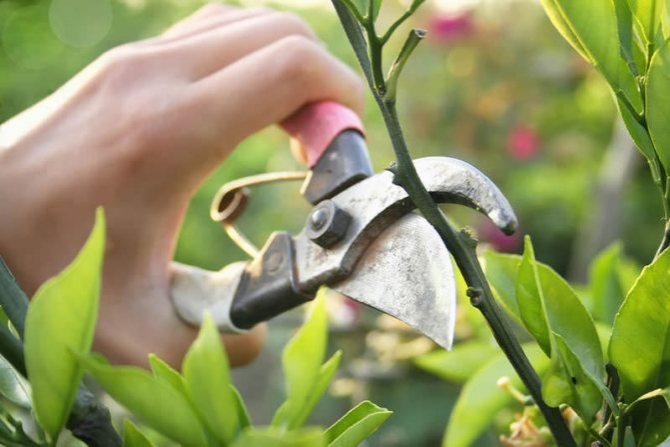

How else can you breed blueberries
For planting and breeding blueberries, you can use not only saplings. For plant propagation, we use the following methods:
Seeds
This breeding method is the most laborious. In autumn, we get the seeds from ripe berries, dry them and sow them into the soil for seedlings to grow. The most suitable conditions for growing seeds:
- air temperature within 23-25 ° С;
- air humidity at 40%.
After planting, we regularly water the seeds, loosen the soil and remove the emerging weeds.
Cuttings
Cut the cuttings in the fall after the bushes have dropped the leaves. We use cuttings of 8-15 cm in size for breeding, which are at the root. We plant them in a peat-sand mixture (1: 3) at an angle.
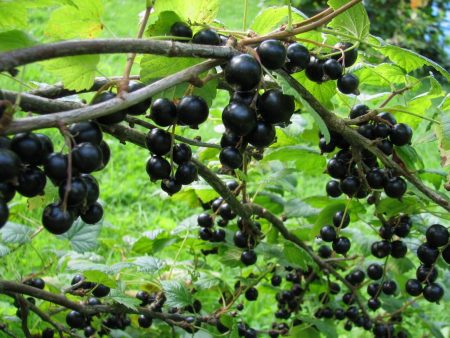

You may be interested in:
How to transplant currants in the fall to a new place The autumn time has come and novice gardeners are wondering, is it worth replanting currant bushes in the fall? When is it ... Read more ...
Blueberry care
Growing garden blueberries
Several times a season you will have to loosen the soil in the area with blueberries to a depth of about eight centimeters, but try not to overdo it, as too frequent loosening can dry out your blueberries, and too deep can damage the horizontally located root system, which is only fifteen centimeters from the surface ... And that is why mulching the soil on the site is of particular importance. You can loosen the soil without removing the mulch, which must be replenished every two to three years. Do not allow weeds to grow in the area with blueberries; remove them immediately after detection.
Reproduction
Blueberries can be propagated by seeds, cuttings and other vegetative methods. The simplest and most common method is propagation by cuttings.
In the fall, root cuttings are cut from the bushes (and they must be thick enough).
For a month before disembarking, they should be kept in a room where the temperature is kept at 1 - 4 degrees Celsius. Then they are planted at an angle in containers with a mixture of peat and sand, adding another layer of the same substrate on top. Typically, these cuttings grow and take root in two seasons.


Blueberry pests and diseases
Blueberry pests
Planting and caring for garden blueberries must be carried out in accordance with agrotechnical rules, so that your plants will be healthy and immune to disease, but sometimes healthy plants also need to be protected. Most often, blueberry berries suffer from birds that peck at ripening fruits.
- Tree care in spring
To preserve the blueberry crop, carefully pull the fine mesh over the bushes. As for insects, they do not cause significant damage to blueberries, although they do not fall year after year, and sometimes in spring blueberry bushes can be attacked by May beetles and beetles, gnawing leaves and eating flowers of the plant, from which the yield of blueberries decreases. In addition, the beetle larvae eat up the roots of the bushes. Blueberries can also suffer from the caterpillars of the pine silkworm, leafworm, scale insects and aphids.
Beetles and their larvae must be collected by hand and drowned in a bucket of salt water, and in the fight against other pests, the best remedy is spraying blueberry plantings with actellik or karbofos, both preventive (in early spring and after harvest) and medicinal, when you find on pest blueberries.
Required soil
This berry grows in swampy areas and on peat bogs. A cold and humid climate is suitable for full-fledged growing and ripening of berries... Today, amateur gardeners have learned how to propagate this useful berry in the garden. Its advantages include the fact that the plant is not whimsical, not prone to diseases and various pests.
Important! For a fertile crop, the soil should be loose, moist and sour. Allowable acidity norms are from 3.5 to 5 pH.
Before planting, it is recommended to choose a favorable place, the site should be washed by shallow groundwater up to 60 sentiments. If the soil for planting in the garden is not suitable, it is recommended to create the necessary soil yourself.
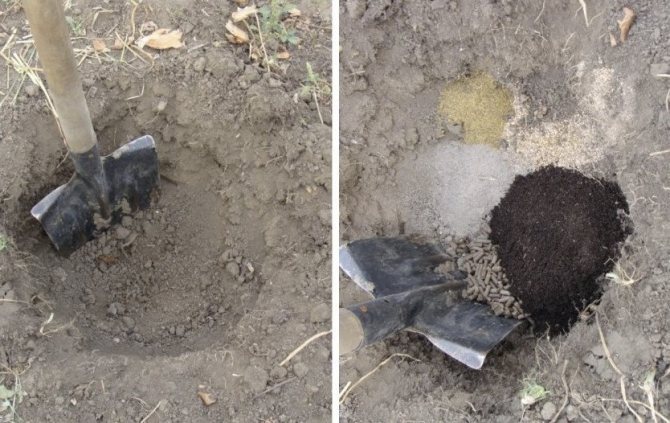

It is not difficult, but you need to act like this:
- dig a hole about 60 by 60 cm in size;
- loosen the soil thoroughly;
- be sure to fertilize the soil with organic matter, for example: peat, sawdust in combination with sand;
- add 40-60 grams of sulfur to the soil;
- pour water in the amount of 1-2 liters;
- proceed directly to planting the plant.
Important! When planting the plant, the roots should be gently straightened for better rooting in the soil.
When planting, it is necessary to observe the distance between the bushes up to 1 meter, not less. The beds should be spaced about 2.5 meters apart. A small layer of sawdust should be poured between the rows to retain moisture at the root system for as long as possible.


In the future, it is important to provide the plant with normal care. One of the most important requirements is moderate and regular watering. If you omit this recommendation, you can not expect a good harvest.
Blueberry varieties
Currently, blueberry varieties are divided into four groups:
- undersized - they are based on the species of narrow-leaved blueberry, crossed with the genetic material of myrtle-leaved and northern blueberries;
- northern tall varieties are distinguished by high winter hardiness and late fruiting, they were bred on the basis of North American species - tall blueberries using the genetic material of common blueberries;
- southern tall varieties Are complex hybrids of northern high-growing blueberries and some species of blueberries found in the south, which helped to make the new varieties drought tolerant. In addition, southern tall blueberry varieties are less dependent on soil pH;
- semi-tall varieties formed by further saturation of tall blueberry varieties with common blueberry genes, which increased their winter hardiness - these varieties can withstand temperatures down to -40 ºC;
- Rabbit eye - the basis of the varieties of this group is the species of blueberry, which allows hybrids to show increased adaptation to hot conditions and a low content of organic matter in the soil. The growing period of these varieties is very long, so there is no point in growing them in areas with a cool and temperate climate - not all berries will have time to ripen before winter.


Of these five groups, only northern tall varieties are suitable for cultivation in our region, and we offer you a description of the blueberry varieties that are easiest to grow in areas with temperate and cool climates.
- Blugold - mid-season, medium-sized variety with a semi-spreading bush and medium-sized berries with a sweet and sour taste. A variety with high winter hardiness, however, it requires thinning and enhanced pruning.
- Patriot - a tall, mid-season variety with a spreading bush one and a half meters in height, large light blue berries with a dense skin, ripening in July-August. Gives consistently high yields - up to 7 kg of berries per bush. The variety is resistant to cold weather and diseases typical of blueberries.
- Chippewa - medium-sized early ripe variety up to one meter high with medium and large very sweet berries of light blue color. The variety is characterized by high winter hardiness - it can withstand frosts down to -30 ºC. This variety is good to grow in a summer cottage and even in containers.
- Duke - late flowering, but early ripe tall variety, reaching a height of two meters. Late flowering occurs after spring frosts, and early ripening allows you to get high stable yields of medium and large berries, which do not shrink over the years. The variety is extremely winter-hardy, but requires increased pruning.
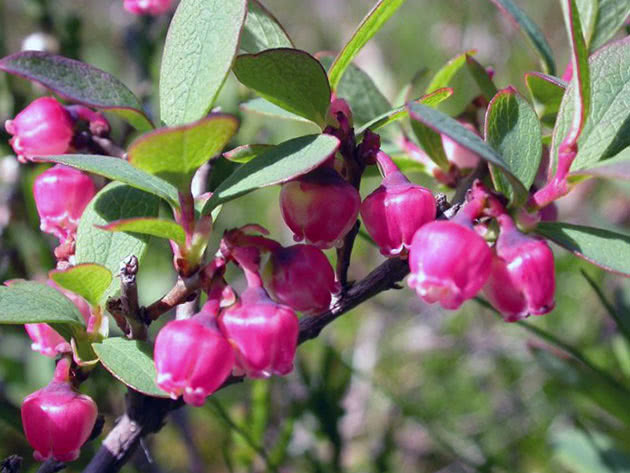

- Sunrise - a medium-tall, spreading shrub with weak shoots, which allows pruning not as often as in other varieties. Large, slightly flattened dense berries of excellent taste ripen in mid-July, up to 4 kg of fruits can be removed from one bush. Unfortunately, the cultivar can suffer from spring frosts.
- Chanticleer - a medium-sized shrub with ascending branches, blooming after spring frosts. Medium-sized light blue sour-sweet berries ripen at the end of June. Up to four kilograms of fruit can be removed from one bush. The variety has a high winter hardiness.
- Northland - a low, spreading bush of only one meter in height, capable of producing regular harvests of 5-8 kilograms of medium-sized blue dense berries of excellent taste. The variety is distinguished by high frost resistance and a short growing season - all the berries have time to ripen before winter. This variety is also appreciated in decorative floriculture for its compactness and short stature.
- Elizabeth - a tall, spreading bush with erect stems and reddish shoots, which is a sign of a particularly high winter hardiness of the variety. The yield is from four to six kilograms of berries from one bush. The variety is late, but one of the best in taste: very sweet and aromatic large berries up to 22 mm in diameter begin to ripen from the beginning of August. Unfortunately, not all berries have time to ripen.


Growing conditions
Garden blueberries are more suitable for cultivation in the southern regions. When cultivating blueberries in mid-latitudes, you need to choose early varieties, otherwise the berries will not have time to ripen. The growing season for blueberries averages 160-165 days.
The plant has a high frost resistance, it can withstand temperatures up to –29–32 С °, depending on the variety. You can plant blueberries outdoors in spring or autumn. The first option is more preferable: by the onset of cold weather, the seedling will have time to root well and gain strength, which will allow the plant to survive the winter.
Advertisement 1
Blueberries are demanding on the soil. She loves light, aerated, acidic, well-warmed by the sun soils. Grows well on peat bogs, sandy loam and loamy soils. The humus content should be at least 3.5%, acidity from 3.8 to 4.8 pH. High-moor peat bogs are best suited for her. If the acidity of the soil exceeds 6.0 pH, the addition of ammonium sulfate and mulching with sawdust is required. Blueberries react equally badly to both lack and excess of moisture.
Important! If blueberry leaves turn red in summer, the acidity of the soil is low.
If you plan to plant blueberries in the spring, start preparing the soil in the fall. A mixture of fertilizers is introduced and the soil is dug to a depth of 25–30 cm. In April, blueberry bushes can be planted.
Preparing for winter
Winters in the Krasnodar Territory are mild, and blueberries are a frost-resistant plant, so it is not necessary to cover the bushes. They can be protected from the winds by covering them with spruce or pine branches. After the appearance of snow, it is recommended to throw more of it directly onto the bushes.


So, even though blueberries are a northern berry, they can and should be grown in the Krasnodar Territory. With proper care, it also pleases gardeners in this region with large and sweet fruits.
Using berry bushes for decoration
Blooming and already fruiting bushes will adorn every garden plot throughout the season.
At the time of flowering, beautiful small flowers resembling bells appear on the plant. After 3 weeks of color, the fruits are tied, ripening from them large, beautiful blue berries are obtained. The bushes acquire an unusual and attractive appearance in September, when the foliage turns red.


The tall pigeon is little used to decorate the landscape. But when creating an ornamental garden with heather, erica, rhododendron, blueberries are certainly involved. Also, some varieties are used to create hedges, as this vegetation tolerates cutting shoots.
Choosing this plant for your site, you will not go wrong, given all its useful and unique properties and the breadth of their use.
Blueberry properties - benefits and harms
Useful properties of blueberries
Scientists have long been interested in the harm and benefits of blueberries, and as a result of scientific research, they have discovered that this berry has a number of unique qualities. It protects the body from radioactive radiation, improves the functioning of the intestines and pancreas, slows down the aging of nerve cells, and strengthens the walls of blood vessels.Blueberry has a choleretic, antiscorbutic, antisclerotic, anti-inflammatory, cardiotonic and hypotensive effect.
Blueberry fruits contain provitamin A, vitamins B1, B2, C, PP, which is responsible for the elasticity of skin capillaries and reduces the risk of varicose veins, six essential amino acids, calcium, phosphorus and iron, which in the form in which it is found in blueberries, almost completely absorbed by the human body. Blueberries are effectively used in the treatment of rheumatism, atherosclerosis, hypertension, capillary toxicosis, sore throat and other diseases.
Blueberry juice is prescribed for diabetes mellitus, diseases of the gastrointestinal tract, fever. Blueberry berries relieve eye spasms and help restore vision, the pectins contained in them help to bind and remove radioactive metals from the body. And due to the content of highly active antioxidants in berries, blueberry prevents the formation of cancer cells in the body.


In folk medicine, blueberries are eaten raw, as well as in the form of decoctions, infusions and tinctures. The benefits of blueberries are obvious for both sick and healthy people who, by eating fresh berries, strengthen their immunity and saturate the body with vitamins. However, not only berries are used as raw materials for medicines, but also blueberry leaves and shoots.
Blueberry decoction is indicated for heart disease. Prepare it like this: put two tablespoons of chopped young branches and blueberry leaves in an enamel pan, pour one glass of boiling water, cover with a lid and put the pan in a water bath for half an hour, then remove, cool, filter, squeezing out the rest. The resulting amount is added with boiled water to make a glass of broth, which the cores need to take one tablespoon four times a day.
In case of dysentery or diarrhea, pour a tablespoon of dry berries with a glass of boiling water, heat for five minutes over a fire, remove and leave under the lid for a quarter of an hour. You need to take this infusion, too, one tablespoon four times a day.


For diabetes mellitus, use the following decoction: pour one tablespoon of chopped dry twigs and blueberry leaves with two cups of boiling water (400 ml) and heat over low heat for five minutes, then remove from heat, cover, let it brew for an hour, strain and take before meals 100 ml three times a day.




